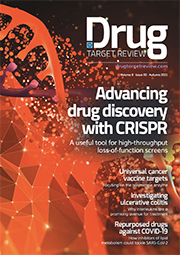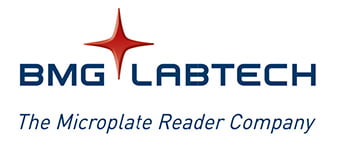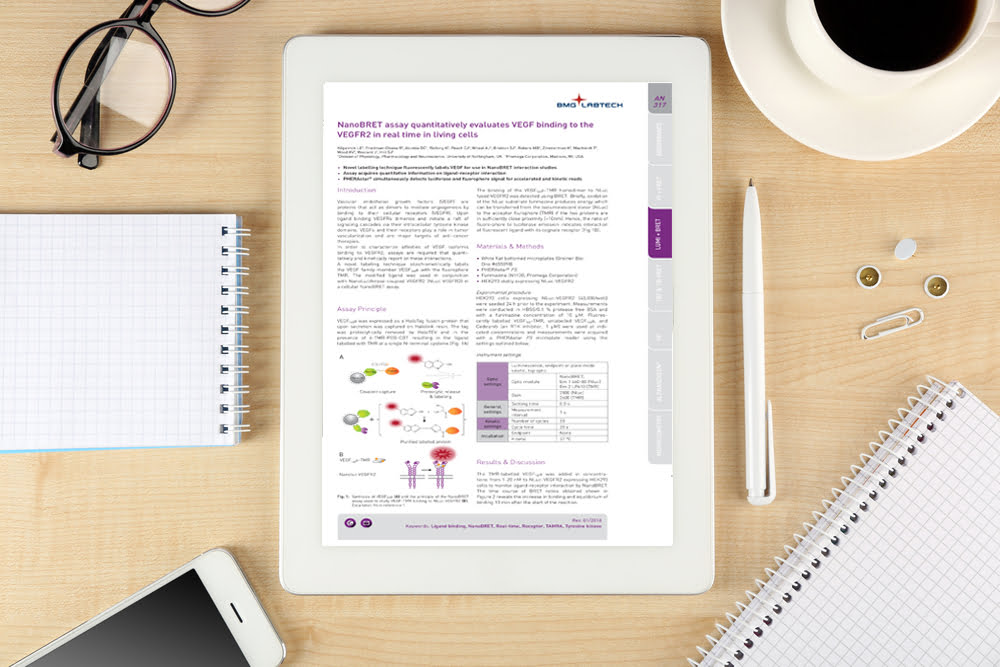Application note: NanoBRET™ assay quantitatively evaluates VEGF binding to the VEGFR2 in real-time in living cells
Posted: 4 September 2018 | BMG Labtech GmbH | No comments yet
In this application note, we show how the signal of luciferase and fluorophore were acquired simultaneously with the PHERAstar microplate reader…
Receptor tyrosine kinases (RTK) are transmembrane receptors that translate stimulation by growth factors into regulation of cell growth, proliferation, cell death and differentiation. Consequently, aberrant RTK-signalling is implicated in cancer, making it a popular anti-cancer drug target. Development of pharmaceutical RTK-inhibitors requires assays that characterise receptor-ligand interaction and that identify inhibitors thereof.
A novel method labelled the vascular endothelial growth factor (VEGF) at a single site with the fluorophore TMR. The labelled ligand was used in combination with HEK293 cells expressing the RTK VEGF-receptor 2 (VEGFR2) fused to the NanoLuc® luciferase. Upon interaction of ligand and receptor, bioluminescence resonance energy transfer (BRET) between luciferase and fluorophore takes place.
The signal of luciferase and fluorophore were acquired simultaneously with the PHERAstar microplate reader. This way, not only the pKi of a VEGF-inhibitor was determined, but also the time-course of binding and inhibition was monitored.
This application note is restricted - login or subscribe free to access


Why subscribe? Join our growing community of thousands of industry professionals and gain access to:
- quarterly issues in print and/or digital format
- case studies, whitepapers, webinars and industry-leading content
- breaking news and features
- our extensive online archive of thousands of articles and years of past issues
- ...And it's all free!
Click here to Subscribe today Login here
Related content from this organisation
- Product hub: High-throughput screening of cyclic peptide libraries for developing drugs to challenging targets
- Application note: Screening for optimal association and dissociation rates of ligands using a live cell binding assay
- Expert view: Promising methods in kinase screening
- Screening In-Depth Focus 2019
- Under the microscope: Improving hit discovery efficiency at Europe´s leading screening centre
Related topics
Assays, Cell-based assays, Ligands, Microplate readers, Screening
Related organisations
BMG Labtech GmbH





